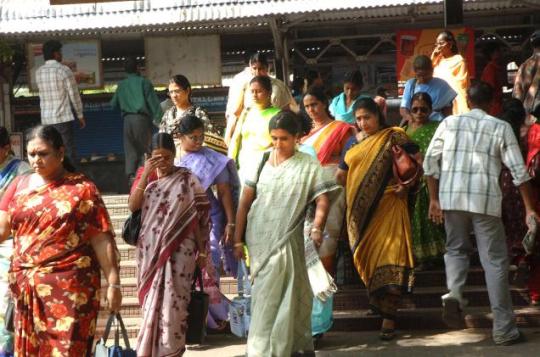Call for papers
The role of human activity in accelerating climate change is beyond doubt. The fourth assessment report (4AR) of the Intergovernmental Panel on Climate Change (IPCC), confirmed that overwhelming scientific evidence links impact of human activity to climate change and unless action to significantly reduce emissions of greenhouse gases is taken, the world is on a path to runaway warming.
Why is it so important to integrate gender aspects into debates on climate change?
Climate change and climate impacts are not gender neutral. Gender equality is a critical component of responses to climate change at all levels - it should be integrated in all aspects of climate change planning and decision making.
At first glance, it might seem unintuitive to link climate change and gender issues. However, since societies still largely rely on gendered roles and responsibilities, both sexes do not have the same impact on climate change, and perhaps more importantly, are differently affected by it.
Women are disproportionately affected
Gender aspects of climate change are a matter of justice, human rights, and human security. Women are the poorest people in the poorest areas. Moreover, several studies indicate that the death rate in natural disasters can be four times higher for women. We have compelling data on how women are more vulnerable to climate change. It is thus important to be committed to gender sensitive approaches. We must adapt the mechanisms in place so that they reduce, or at least do not increase the gender issues.
Women empowerment and women's role
Women are change agents on both household and community levels with regard to natural resource management. Women are long-time leaders on poverty eradication and sustainability, and gender equality is a key issue in the climate change debate. If we do not implement gender-sensitive policies to fight the climate change, it will have disastrous consequences on the gender balance.
On the other hand, if we include and empower women, who are often responsible for agriculture, food and water supply, as well as first education of the next generation, we will do a better job in addressing the climate change and its consequences.
Mainstreaming the gender perspective is not only a sensible choice for our societies; it is a better, more efficient way to reach our goals.
Because this subject is at the very core of our preoccupations as members of the Green Party, we need to have better information and understanding on this subject, and answer these questions:
How can we counteract the disproportionate burden of climate change on women? How to empower women so that they become a key partner in reducing climate change?
How can gender equality be fully integrated into climate policies?
We encourage everyone to send us a paper with ideas and propositions on these issues.
TERMS OF PARTICIPATION
By taking part in the contest, participants agree on the terms of participation.
How and when to hand in my paper?
All papers have to be sent per e-mail to Greens.essaycontest@europarl.europa.eu before 1 June 2011, midnight. Papers sent after the deadline will not be accepted.
Who can apply?
Everyone.
Do I have to be a European citizen?
No, contributions from around the world are welcome.
About languages
Papers can be written in one of the four following languages: English, French, German and Spanish.
What kind of paper?
Papers should have the written form of an essay.
How long should the paper be?
Papers should be between 20.000 and 28.000 characters (with spaces) long.
How should it be presented?
Papers should be typed. No handwritten paper will be accepted.
What will happen next?
A jury made up of Green Members of the European Parliament, representatives of the European Green Party, the Federation of Young European Greens, Green Foundations, EGGO (European Green Gender Observatory) and NGOs will select the best essays.
Depending on the number of papers submitted, a pre-jury might do a pre-selection for the final jury.
What is the prize for the winner?
First of all, the best three essay writers will be invited to the Green Summer University in Frankfurt (Oder) and Slubice (1). This invitation includes transportation costs, hotel room for three nights and meals for the four days
The best essays will also be published in their original language and English, with a preface from Members of the Parliament and members of the jury. This book will be printed out and distributed during the University (to be confirmed depending on printing delays). The winners will get 10 copies each.
An event will be organised for the winners to read their essays to a selected audience, followed by a private dinner with members of the jury.
(1) The Summer University is an annual European event organized by the Green Party. Last year, it brought together almost 1000 people from all walks of life. Greens and non-Greens, NGO representatives, scientists, managers and trade unionists, intellectuals and artists, students and other young people attended 4 plenary sessions and 46 workshops, 10 cultural events and 10 excursions.





